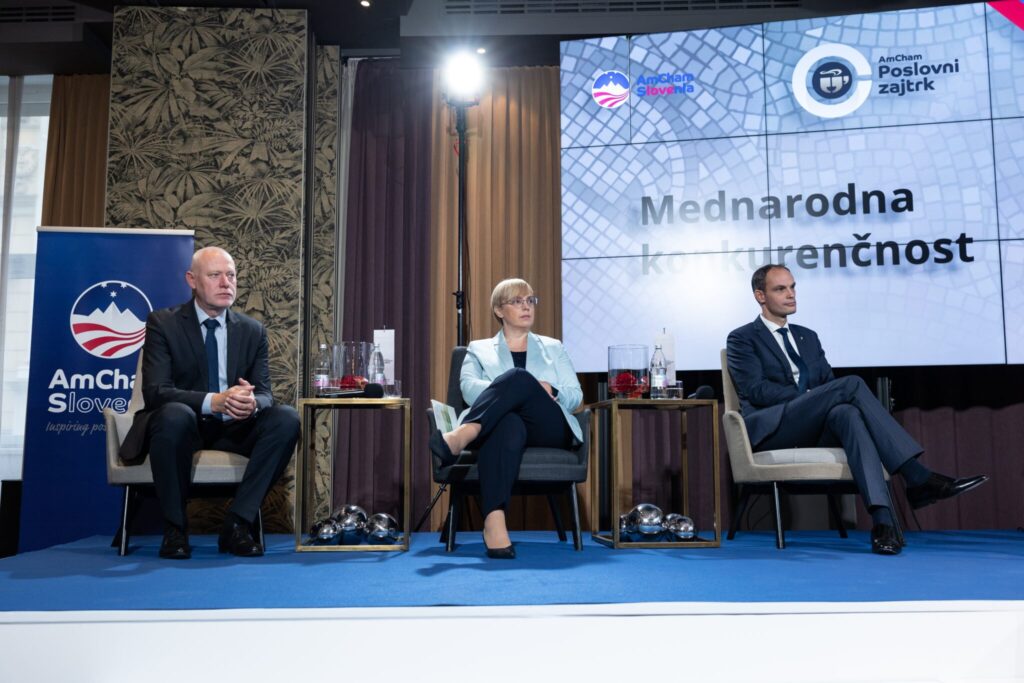The Parsifal Agency’s recent public opinion poll shows a drop in support for presidential candidate Nataša Pirc Musar by just under 7 percentage points (to 19.9 percent), while respondents favour Anže Logar, who is convincingly in the lead with 21.7 percent support. Milan Brglez is in third place with 10.7 percent support. Logar would beat both Pirc Musar and Brglez in the second round.
Between the 10th and the 14th of October, the Parsifal Agency measured the support for presidential candidates for the upcoming elections for the President of the Republic of Slovenia, which will be held on the 23rd of October. Using a sample of 705 respondents, it came to the following conclusions: 64.1 percent of the respondents will definitely attend the elections for the President of the Republic, which is just over 5 percent more than the number of people who were certain they will go vote in September. Meanwhile, 7 percent of all respondents do not intend to vote at all.
The respondents expressed the highest level of support for presidential candidate Anže Logar with 27.1 percent, followed by Nataša Pirc Musar with 19.9 percent, and Milan Brglez with 10.7 percent. Sabina Senčar is in fourth place with 4.8 percent support, and Janez Cigler Kralj has 4 percent. The Kočevje Mayor Vladimir Prebilič currently enjoys 3.2 percent support, and in the last place is Miha Kordiš, the candidate of the Left party (Levica), who admitted during the latest pre-election debate on the national media outlet Radio-Television Slovenia that he cheated the country out of some money with his institute. 27.4 percent of the respondents remain undecided.
Judging by the results of the latest Parsifal public opinion poll, support for candidate Logar rose by just under one percentage point in September, while support for Nataša Pirc Musar plummeted – namely, she lost almost 7 percentage points.
Logar would beat both candidates of the transitional left in the second round
If the second round of the presidential election were to take place, Anže Logar would win 41.3 percent of the vote, and Milan Brglez would win 33.6 percent. If the voters had to choose between Anže Logar and Nataša Pirc Musar, Anže Logar would get 39.6 percent of the vote and Nataša Pirc Musar would get 37.3 percent. In both cases, between 23.1 percent and 25.1 percent of the respondents would remain undecided.
The mainstream media is trying to boost Brglez’s popularity with a strong campaign to get Nataša Pirc Musar and Milan Brglez into the second round instead of Anže Logar. However, the Parsifal public opinion poll that was conducted less than a week before the elections shows that this will be virtually impossible to achieve, as Logar is too strong a candidate for either of them. The only question is whether they have enough time between now and the elections to get Brglez enough support for him to oust Pirc Musar from the second round. She would have a slightly better chance against Logar than Brglez, but all the indications are that Logar is stronger than the two candidates of the transitional left.
The public opinion poll was conducted between the 10th and the 14th of October, and 705 respondents participated in it, of which 50.1 percent were women. The average age of the participants is 53.5 years, and the standard deviation is 16.8 years. The majority of the respondents are from the oldest age group (46.6 percent), a slightly smaller share of participants belongs to the middle age group (33.6 percent), and the smallest number of respondents is from the youngest age group (19.8 percent). The majority of the respondents have completed high school (34.2 percent), followed by those with completed high education or higher (28.8 percent), 20.6 percent of respondents have finished vocational school, and 16.5 percent have either completed or have not completed primary school. The majority of the respondents currently reside in a small village or hamlet (55.6 percent), followed by those who live in the city (27.2 percent) or a smaller town (17.2 percent). Most of the respondents are from Central Slovenia (26.1 percent), followed by the Podravska (15.9 percent) and Savinjska (11.6 percent) statistical region.
Tanja Brkić


